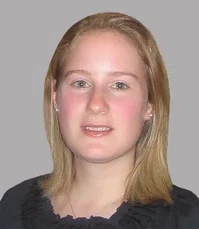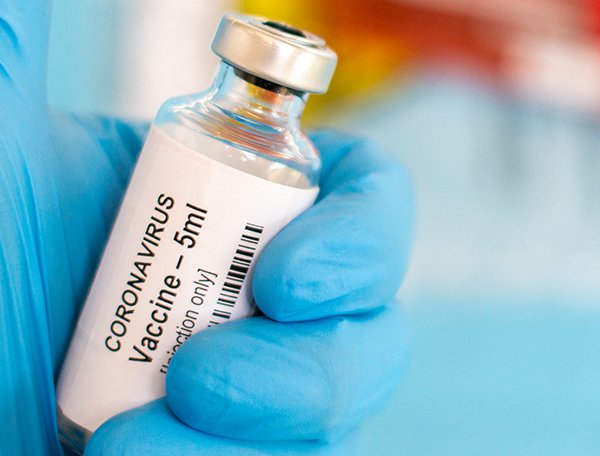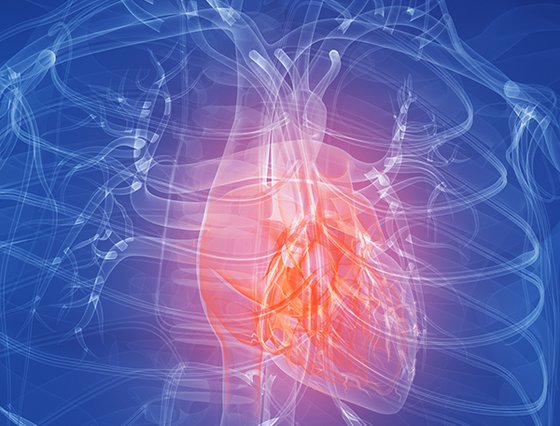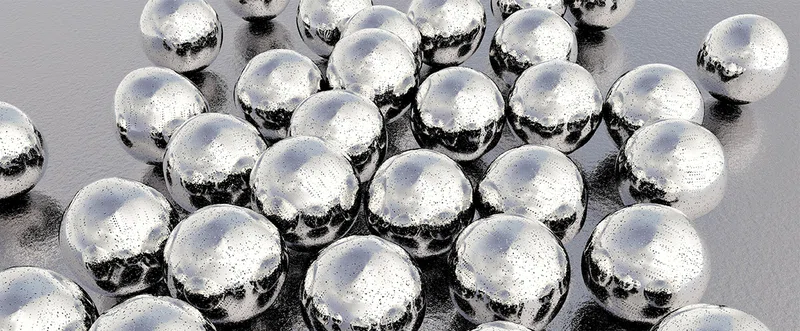


Below are excerpts of a Q & A session with Carly Filgueira, PhD, assistant professor in the Departments of Nanomedicine and Cardiovascular Surgery at Houston Methodist. Filgueira is currently investigating nanotechnological approaches to find alternative treatment strategies for physiological disorders. She was recently awarded two grants exceeding $600,000 total from the Department of Defense to support her projects on a spectroscopic approach to overcome the barriers of early familial hypercholesterolemia diagnosis and the effects of thyroid hormone metabolite treatment for postmenopausal heart repair.
Can you give an overview of your current research efforts?
I have a wide range of research interests because I have a genuine passion for reading and science. I also had somewhat of a diverse training in research as my doctoral degree was in Chemistry, but my postdoctoral studies were in the Department of Pathology and Genomic Medicine here at Houston Methodist. Because I had this diverse training, I'm inclined to think about things from different angles. This led me to Nanomedicine because it was where I could merge several different disciplines. In fact, nanotechnology is often said to be where science and engineering intersect. I think that is interesting. My research efforts are to understand and study how we can best use nanoscale materials as therapeutic modalities. This includes things like understanding how light interacts with nanoscale materials to how changing the surface properties of a nanoscale material will alter its distribution in the body as well as how we can best achieve drug delivery locally without harmful systemic effects.
It appears that you have a lot of different kinds of research. Can you go into some details as to how they all work together?
I think overall is to use nanotechnology as a vehicle to achieve improved results. Whether it is by functionalizing a nanoparticle, encapsulating a polymeric particle with a drug, or releasing a therapeutic through nanofluidics—these are just different strategies that we can exploit to deliver specialized treatments for patients. Because of my postdoctoral studies in genomic medicine, I became really interested in hormones and how different hormones and mimetics interact with different types of receptors, most specifically, nuclear receptors, to induce physiological responses. Understanding this is so important because it is essential to understanding how a disease develops or how we can possibly use an intervention with a therapeutic to eliminate undesired side effects. Greater selectivity towards particular receptors or target tissues, coupled with local delivery, can induce specific pathways, genes or responses and improve therapeutic development and efficacy.
I’m familiar with your review paper published in Nanomedicine discussing your efforts to apply nanotechnology to cardiovascular diseases – learn more on this line of research here. Are there additional diseases that you are targeting as well?
Yes, I also have a lung cancer project and an orthopedic project that have various aspects as well. In fact, the orthopedic project is like a tree with several branches of research, including a spinal fusion-related project and an osteoarthritis-related project.
Can nanotechnology and nanoparticles be geared towards any disease or are there exceptions?
There are definitely particular particles that have better properties for a certain indication or need. A lot of my graduate studies were focused on metallic nanoparticles. I’m really interested in metallic nanoparticles because they can be used as sensors as well as therapeutic modalities. That’s where the term ‘theranostic’ comes from – you can have a therapy and diagnostic modality combined in one central unit. That’s one of the reasons why I like metallic nanoparticles. But I’m also interested in polymeric nanoparticles because, unlike the solid metal particles, they can be fabricated to have a drug payload on the inside. I definitely think different types of particles have different advantages. For example, solid gold and metallic particles are not magnetic, so it is also really cool to study particles with magnetic properties that can be used for contrast agents for MRI and sorting or screening different things.
Can you share what your experimental plans are for investigating the effects of thyroid hormone metabolite treatment for post-menopausal heart repair and the spectroscopic approach to overcome the barriers of early familial hypercholesterolemia diagnosis?
These are two very diverse projects, as you can tell. Studies in pre-menopausal women show that hysterectomy, which reduces estrogen levels, is associated with a higher risk of cardiovascular disease. Similarly, a loss of thyroid hormone is associated with reduced cardiac health in women. Triiodothyronine (T3) replacement therapy has revealed beneficial effects in patients with heart failure and those recovering from cardiac surgery. T3 activates both thyroid hormone receptors alpha and beta to a similar degree. We have found that 3,3’-diiodothyronine (3,3′-T2), which is formed from the breakdown of triiodothyronine (T3), has greater specificity for thyroid hormone receptor alpha. This receptor is predominantly expressed in the heart and, when activated, can stimulate signaling pathways that promote heart repair. For the first project, we innovatively utilized the effects of thyroid replacement therapy through use of the lesser known, endogenous thyroid hormone metabolite, 3,3′-T2. Experimentally, we plan to study the effects of treatment with T3, the active form of thyroid hormone, and its metabolite 3,3’-diiodothyronine (3,3′-T2) for post-myocardial infarction treatment in ovariectomized animal models that mimic the post-menopausal condition.
For the second project, our innovation is to use “near infrared” light (just outside the visible spectrum) and gold nanorods as a means to measure “bad” LDL cholesterol more accurately and directly. Gold nanorods are tiny particles made of pure metallic gold. The nanorods will be coated with phospholipids, which are the fat molecules that make up the thin membrane that surrounds cells. Cholesterol permeates into cell membranes where it plays an important role in the membrane’s molecular structure and function. By disguising the gold nanorods so that they mimic a cell membrane, they will trap and detect the presence of nearby cholesterol. Our strategically designed nanoplatform, based on laser light scattering, will enable us to detect and directly measure LDL cholesterol in an individual more easily and effectively, allowing for a more widespread and easily implementable means to directly measure LDL-C for earlier familial hypercholesterolemia diagnosis.
At the nanoscale, unique properties begin to appear – whether it is by changing the dimension, which suddenly allows the particle to absorb light at a different wavelength or changing a dimension in a way that causes a drug to diffuse in a different manner. Also, things like strong signal enhancements happen with nanoscale materials that can be used to identify chemicals which we leverage in the spectroscopy DoD project. All of this is very interesting to me and how we can best exploit these properties is really what the field is all about

Assistant Professor in the Departments of Nanomedicine and Cardiovascular Surgery at Houston Methodist
Carly Filgueira, PhD

Carly S. Filgueira, PhD
Assistant professor of Nanomedicine
at Houston Methodist
What in your perspective is the most important or interesting application of nanotechnologies?
That’s so hard to answer. I would just say that at the nanoscale, unique properties begin to appear – whether it is by changing the dimension, which suddenly allows the particle to absorb light at a different wavelength or changing a dimension in a way that causes a drug to diffuse in a different manner. Also, things like strong signal enhancements happen with nanoscale materials that can be used to identify chemicals which we leverage in the spectroscopy DoD project. All of this is very interesting to me and how we can best exploit these properties is really what the field is all about.
In your expert opinion, which application will make it to patient use first?
I like to talk about my projects as a horse race. Sometimes I see one project in the lead and then something beyond my control will slow it down. Then suddenly, something will start working on another project- for instance, a stain will suddenly work really, really well, and we will identify something and then our efforts will shift towards that project. So then that project comes in the lead. I can’t really tell you which project will make it to patient use first. But it will be fascinating to see what happens. I will be lucky to see something I worked on have an effect in the medical field. That’s all I can hope for.
Are there any favorite projects or applications that you are most excited about or biased towards?
I really enjoy all the projects I work on! I do have some emotional connections to different projects. For example, I had family members that suffered from cancer. So, of course, I have that emotional connection with my lung cancer project. I guess I don’t have a favorite but there are different factors that tie me to a particular project in a certain way, which is where the passion arises.
This brings me to my next point - is that the basis for your passion for nanotechnology overall or your inspiration for your projects?
When I was younger, I lived with my grandparents, and they had a very strong influence on me. They stressed the importance of school and education. They would tell me that education is something no one can take away from you. So, it started this foundation of wanting to learn as much as I could and going on into higher education and work in labs. After school, I started working in a lab. Once I started working in the labs, I had these mentors and mentorships that inspired me to study a certain topic. I was lucky because I got to work in a chemistry research lab when I was a sophomore. The professor that worked with me often used the word ‘tinker’. He used to say this is your playground in the lab. The lab became a cool place where I could go and test things. We would take the lid off the spectrophotometer and try to understand why it wasn’t working. Normally, this is something I would be afraid to do. But I was encouraged to do that. Mostly, the people surrounding me played a big role in guiding me to keep going and encouraged me. I try to pay that forward with my students too, or any research assistants and post docs that I have in the lab. I want them to feel that same way. I want them to enjoy being in the lab, come up with ideas that they want to test. I think that’s just so important because that fosters that curiosity and science.
Are there any mentors in particular you would like to give a shout out to?
Absolutely, my undergraduate mentor was Dr. J. Houston Miller. He still has a lab, and he is actively doing research. I got to go back and visit just a couple of years ago. My graduate advisor, Dr. Naomi Halas, was really amazing. I was lucky to have a female mentor as my PI and in our lab, we had physicist students, engineering students, biology students and chemists merged together, and we would all be talking about things with completely different points of view. This showed me how important it is to be collaborative in science because everybody would be thinking about something different but that would make the research progress really well. Of course, Dr. Alessandro Grattoni, one of my current mentors and the chair of our department, also has encouraged and guided me to continue science and apply for grants, submit manuscripts, mentor others and much more.
That sounds wonderful. You are absolutely right, the influence you receive from your environment plays a big role in your thought processes and how your career manifests.
I also wanted to touch base on your future plans regarding the two projects for which you received the DoD grants. What do you envision happening with these projects in the next 3-5 years?
We’re focused on publishing the work and pursuing future funding to further advance these projects. We have a strong focus on translational medicine here at Houston Methodist. The thyroid hormone project involves preclinical models, so there is a lot we can translate from the knowledge that we gain. Similarly, the cholesterol project uses ex vivo tissues and the like, which provides fertile ground for gaining new insights into the research question. So, I would love to translate our findings and apply them in vivo. There are several new research directions that can be built off both projects.
I noticed in your biography that as a pre-doctoral student you attended the 55th Lindau Nobel Laureate Meeting in Germany. Can you tell us about that experience?
It was an amazing experience, and I would encourage anyone that is eligible to apply for a scholarship to attend this. I was lucky and I got to hear from several different Nobel Laureate speakers. I also got to have lunches and dinners and meet with them and talk to them personally. I was fortunate to hear a lecture from Dr. Charles Townes about how he had the idea for a MASER, which eventually led to the LASER - he was sitting on a park bench one day when he had this spark of inspiration. I also got to meet another physicist, Dr. Frank Wilczek, and his wife, over a dinner together. I remember he was talking about dark matter and how amazing it would be to be able to identify it and quantify it. He was so passionate and excited about it. I’m trained in chemistry and biology and, suddenly, I was exposed to all these physicists. These ideas got me thinking along new avenues. I remember talking to a physicist named Dr. Brian David Josephson about the experience of déjà vu. So, to talk to these brilliant minds and learn about what inspired them and what their perspectives are about the universe and God and the world was a thrilling experience and I hope other people can have that too. I think it is a great program.
Finally, on a more personal front, what do you do for fun when you are not working?
I have two small boys. One is 6 years old and the other one is 2 1/2. They keep me very busy. Spending time with them is the highlight of my day. We like to go snail hunting in the backyard. My older son loves to find snails. That’s not something I would have ever exposed myself to if I didn’t have these two little boys who love nature. They are a lot of fun.
Interviewed by Abanti Chattopadhyay, PhD, December 2021
Related Articles

Precision Medicine
RNA therapeutics have the potential to transform standard patient care and actualize personalized medicine
RNA as a therapeutic molecule holds great power and the potential to alter the standard of care for patients, actualize personalized medicine, and have diverse applications.

PRECISION MEDICINE
The power of nanotechnology to manipulate theranostics and technology in cardiovascular disease management
Nanotechnology offers a steadily climbing number of applications and advances in the treatment and prevention of cardiovascular diseases - the leading cause of death in the United States.







